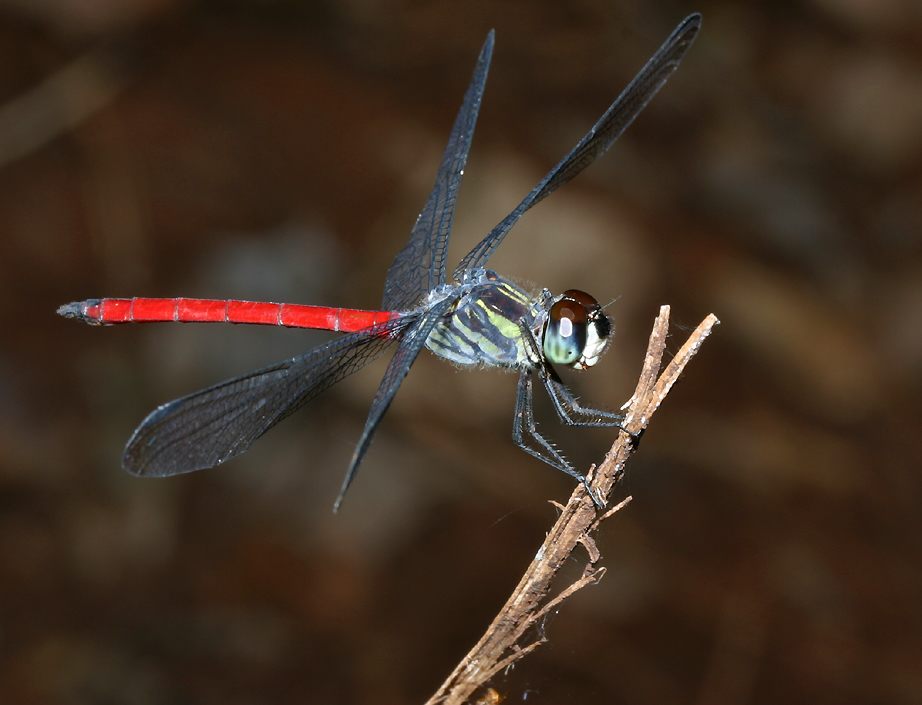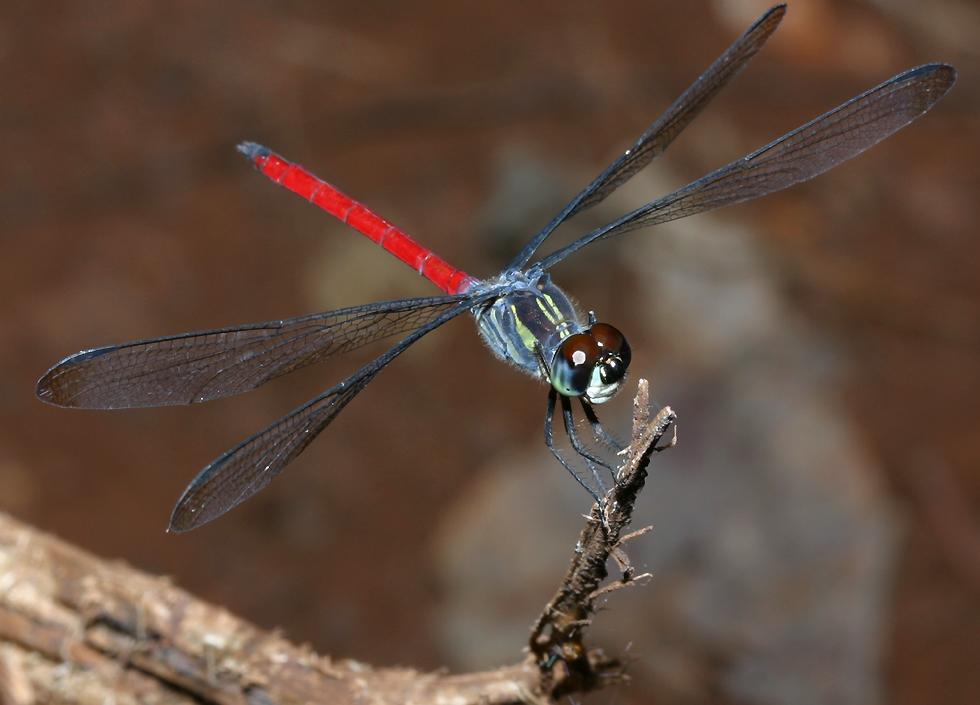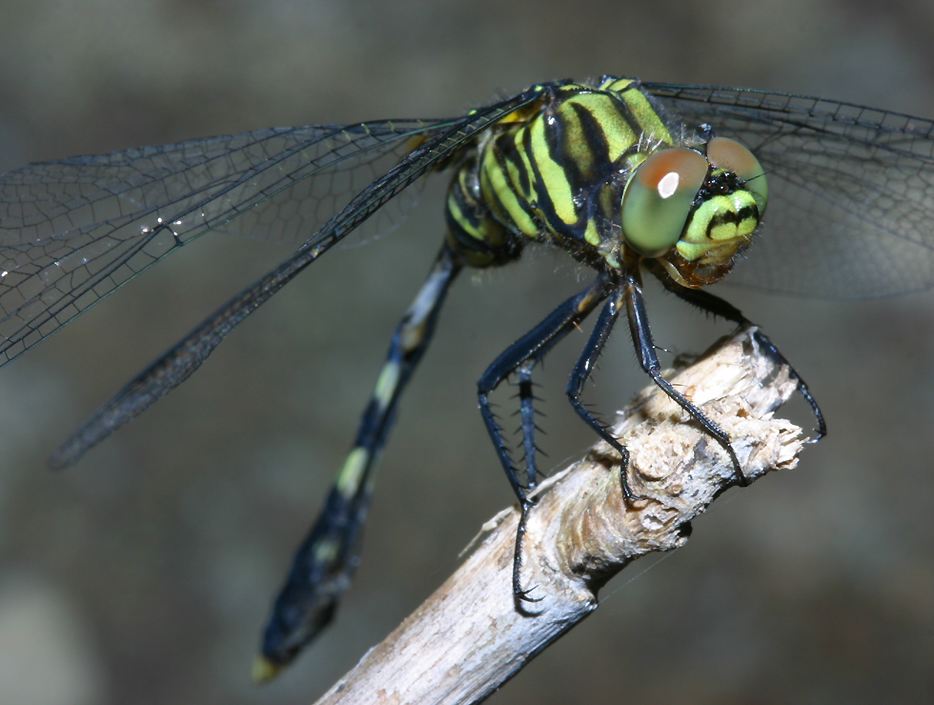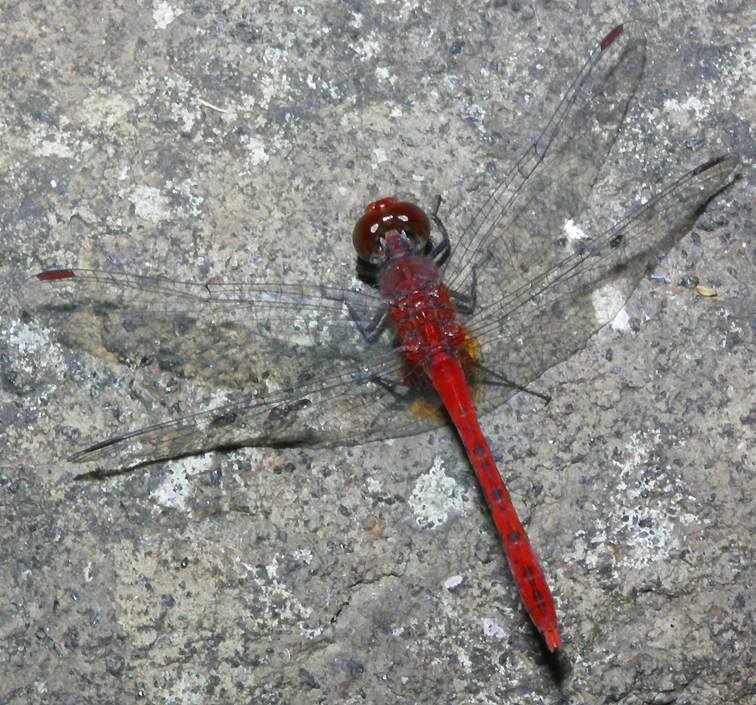Dragonflies and Damselflies of Fiji
|
Look closely and you'll notice that this dragonfly is only standing on four of its legs, and it has its other two legs tucked up behind its eyes. This anatomical or behavioural characteristic is also seen amongst quite a number of butterflies. |
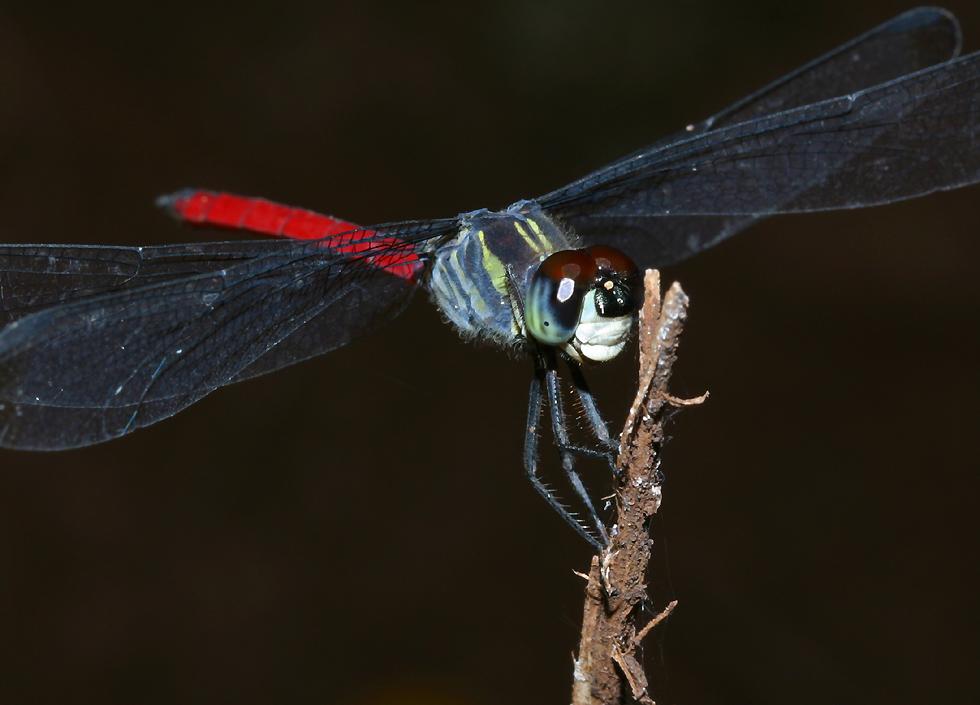 |
|
This type of dragonfly seemed to be more common than the red and green one - at least I encountered it in more places. Here's what I think is the same species, but this time beside the Narange creek up in the Korayanitu National Park, near Nadi on the main Fijian island of Viti Levu. |
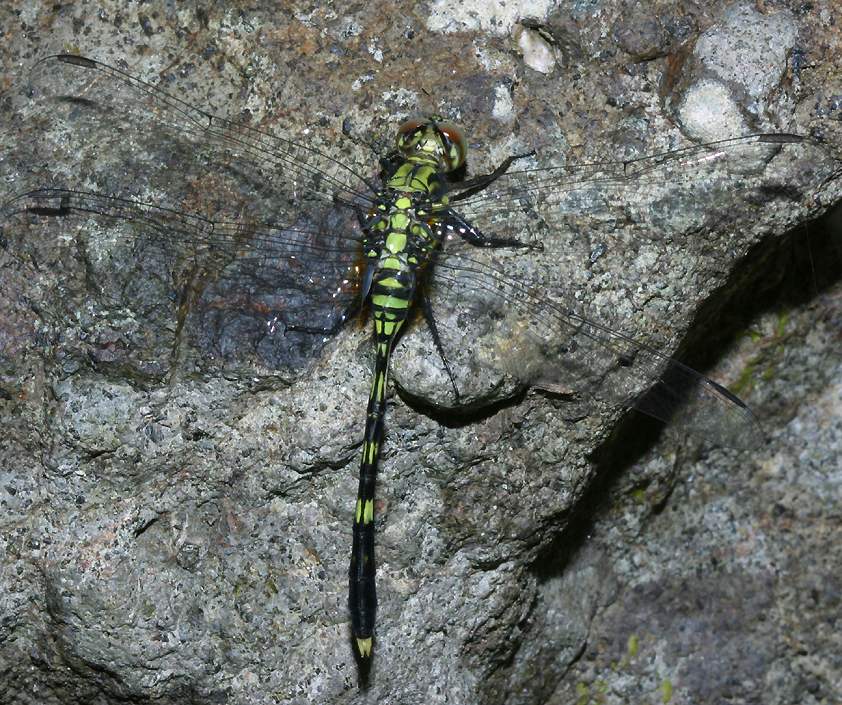 |
|
Unlike the one I found on Vanua Levu, this one didn't have its front legs behind its eyes, nor did it seem to be in any sort of a hurry to go anywhere. I was even able to move it around a bit and get it to crawl onto a stick which I placed under it. |
 |
|
There seemed to be quite a few Red Perchers here. Looking at its wings, this one seems to have picked up quite a bit of wear and tear, which depending on how you look at it either makes it unlucky for being in such condition, or lucky for having lived long enough to accumulate this much damage, which doesn't affect its ability to fly and hunt. The deep red colour signifies that this is an adult male, females are dull yellow and juvenile males start off with the same colors as females, and then turn orange before taking on the red body and face of the adult. Tatty or not, this dragonfly photo ended up as a model for a Fijian postage stamp, along with two other dragonflies on this page. |
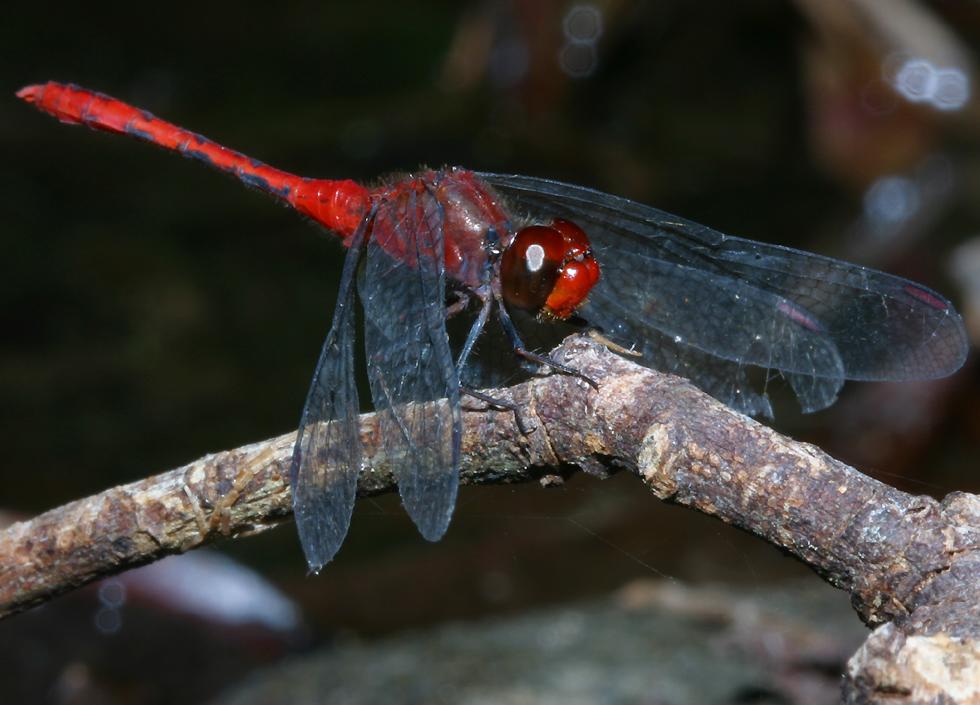 |
|
Perhaps this is the reason why I was able to finally get close - the male damselfly you see in the vertical position in this photo is the same one in the photo above. After it had finished mating I was able to get the previous shot. Like dragonflies, male damselflies have hooks at the end of their abdomen which they use to attach themselves to the female, behind her eyes. The actual sexual organs of the male are just behind its thorax, so after getting hooked up, the male and female move into a "wheel" position, with the tip of the females tail being brought under the female's body and forward to where it can couple with the male's sexual organ. |
 |
